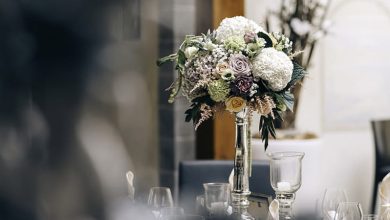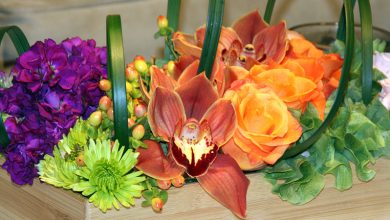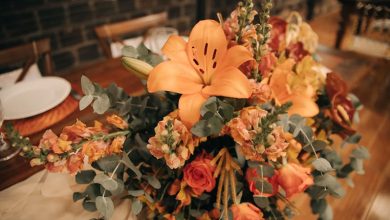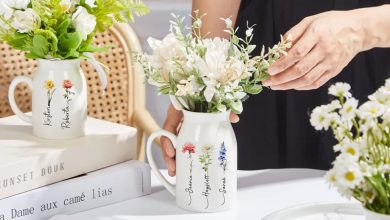The 10 Best plants for bathroom without natural light
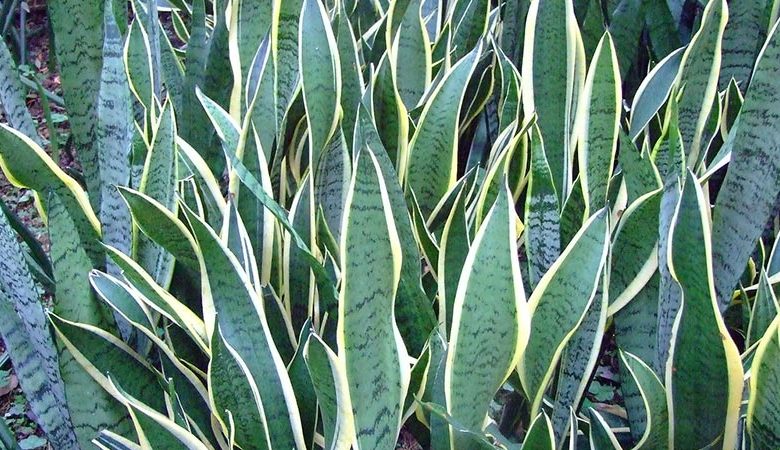
When it comes to bringing a touch of nature into spaces like bathrooms that lack natural light, the best plants for bathroom without natural light can truly transform your space into a serene, spa-like oasis. These resilient plants not only survive but thrive in low-light conditions, making them perfect for adding a refreshing burst of greenery to your bathroom.
Among the top contenders is the Snake Plant, known for its striking, upright leaves that require minimal care and adapt easily to low light. The ZZ Plant is another fantastic choice, with its glossy, oval leaves that seem to shine even in dim spaces.
If you’re looking for a trailing option, the Pothos is your go-to plant, with its heart-shaped leaves that cascade gracefully, adding a lush, tropical feel to your bathroom. For a more unique touch, consider the Asparagus Fern, whose delicate, feathery fronds bring a soft, airy texture to any corner.
Even in the absence of sunlight, these hardy plants not only purify the air but also bring a sense of calm and natural beauty, making them the best plants for bathroom without natural light.
Read More: Snake Plant in Bathroom Without Window: Care Tips
Why Choose Low-Light Plants for Your Bathroom?
Opting for low-light plants in your bathroom is an excellent way to introduce the calming presence of nature into a space that often lacks natural light. Bathrooms are typically smaller, enclosed areas where direct sunlight is limited or nonexistent, making them less suitable for most traditional houseplants.
Low-light plants are specifically adapted to thrive in such conditions, requiring minimal sunlight to maintain their lush, green appearance. These plants not only survive but flourish in the humid, warm environment typical of bathrooms, making them a perfect fit for adding a touch of natural beauty without the need for constant care or special lighting.
Additionally, low-light plants are known for their air-purifying abilities, helping to remove toxins and improve the overall air quality in your bathroom. By choosing low-light plants, you can effortlessly create a refreshing, spa-like atmosphere in your bathroom, enhancing both the aesthetic appeal and the well-being of your space.
The 10 Best plants for bathroom without natural light
When selecting the best plants for a bathroom without natural light, it’s essential to choose varieties that thrive in low-light conditions and can tolerate the humid environment typical of a bathroom. These resilient plants not only survive but also add a refreshing touch of nature to your space. Here’s a detailed look at the 10 best plants for bathroom without natural light:
1. Snake Plant (Sansevieria trifasciata)
The Snake Plant, also known as Mother-in-Law’s Tongue, is a top choice for bathrooms lacking natural light. Its tall, sword-like leaves are not only visually striking but also incredibly low-maintenance. It can withstand low light, high humidity, and irregular watering, making it ideal for bathrooms. Additionally, it’s known for its air-purifying properties, absorbing toxins such as formaldehyde and benzene.
2. ZZ Plant (Zamioculcas zamiifolia)
The ZZ Plant is famous for its shiny, dark green leaves and ability to thrive in low-light environments. It’s highly drought-tolerant, requiring very little water, and can survive in various humidity levels. The ZZ Plant’s robust nature makes it one of the best plants for bathrooms without natural light.
3. Pothos (Epipremnum aureum)
Pothos, with its heart-shaped leaves and trailing vines, is perfect for adding a lush, tropical feel to your bathroom. It grows well in low-light conditions and thrives in high humidity. Pothos is also easy to propagate, so you can easily share it with friends or spread it throughout your home.
4. Philodendron (Philodendron hederaceum)
Philodendrons are another great option for low-light bathrooms. These plants have heart-shaped leaves that can grow as vines or in a more bushy form. They are tolerant of low light and high humidity, and their vibrant green leaves can brighten up any dull corner of your bathroom.
5. Peace Lily (Spathiphyllum)
Peace Lilies are renowned for their beautiful white flowers and glossy green leaves. They thrive in low-light conditions and are well-suited for the humidity of a bathroom. Peace Lilies are also excellent air purifiers, removing pollutants like ammonia, benzene, and formaldehyde from the air.
6. Cast Iron Plant (Aspidistra elatior)
As its name suggests, the Cast Iron Plant is virtually indestructible. It can survive in very low light and requires minimal care, making it one of the best plants for a bathroom without natural light. Its dark green, lance-shaped leaves add a touch of elegance to any space.
7. Asparagus Fern (Asparagus setaceus)
The Asparagus Fern, with its delicate, feathery foliage, adds a soft, airy texture to your bathroom. It thrives in humid environments and can tolerate low light, although it does prefer indirect light when possible. This plant does require regular watering to keep its soil moist.
Read More: Chinese Evergreen in Bathroom: Benefits and Care Tips
8. Spider Plant (Chlorophytum comosum)
Spider Plants are known for their arching leaves and small offshoots, often called “pups.” They are incredibly easy to care for and do well in low-light and high-humidity environments. Spider Plants are also excellent at filtering indoor air, making them a healthy addition to your bathroom.
9. Boston Fern (Nephrolepis exaltata)
Boston Ferns are well-known for their lush, arching fronds that can soften the look of any room. They thrive in humid environments and can tolerate low light, though they prefer bright, indirect light. These ferns do require regular watering and misting to keep their fronds from drying out.
10. Chinese Evergreen (Aglaonema)
Chinese Evergreens are popular for their colorful, variegated leaves and ability to grow in low-light conditions. They are slow-growing and require minimal care, making them ideal for a bathroom without natural light. Chinese Evergreens are also known for their air-purifying qualities, helping to keep your bathroom environment fresh and clean.
Each of these plants has unique qualities that make them the best plants for bathroom without natural light. Whether you’re looking for something tall and striking like the Snake Plant or something with a softer touch like the Asparagus Fern, these plants will not only survive but thrive, bringing a touch of nature into even the darkest bathrooms.
How to Care for Plants in a Bathroom with No Natural Light
Caring for plants in a bathroom without natural light requires some thoughtful adjustments to ensure they thrive in the low-light, humid environment. Here’s a guide to help you keep your bathroom greenery healthy and vibrant:
1. Choose the Right Plants
Start by selecting plants that are well-suited for low-light conditions. Species like Snake Plant, ZZ Plant, and Pothos are excellent choices as they naturally thrive in dimly lit environments. These plants are not only resilient but also adaptable to the fluctuating humidity levels typically found in bathrooms.
2. Supplement with Artificial Light
If your bathroom lacks any natural light, consider using artificial lighting to support your plants. Full-spectrum LED grow lights can mimic the natural sunlight that these plants need to photosynthesize. Position the lights close to the plants and set them on a timer to provide 10-12 hours of light daily.
3. Watering Practices
In a bathroom, plants may require less frequent watering due to the higher humidity levels. However, it’s essential to monitor the soil moisture closely. Water your plants only when the top inch of soil feels dry to the touch. Overwatering can lead to root rot, especially in low-light conditions where evaporation is slower.
Read More: Snake Plant in Bathroom Feng Shui: Benefits and Tips
4. Humidity Management
Most low-light bathroom plants love humidity, which is abundant in bathrooms due to showers and baths. This natural humidity can help your plants thrive, but be cautious of excessive moisture that can lead to mold or mildew. Ensure your bathroom has proper ventilation, and consider using a dehumidifier if needed.
5. Regular Cleaning
Dust and grime can accumulate on the leaves of plants, especially in a bathroom environment. Regularly wipe the leaves with a damp cloth to keep them clean and to maximize their ability to absorb light. This practice also helps prevent pests from settling on your plants.
6. Fertilizing
Even in low-light conditions, your plants will benefit from occasional feeding. Use a balanced, water-soluble fertilizer every 4-6 weeks during the growing season (spring and summer). In the fall and winter, reduce feeding as most plants enter a dormant phase.
7. Rotate Your Plants
If possible, rotate your plants to a brighter location occasionally, such as a windowed room for a few days each month. This allows them to recharge with some natural light, especially if your bathroom receives no natural light at all.
8. Monitor for Pests and Diseases
Bathrooms can be a breeding ground for pests like fungus gnats and mold due to the constant moisture. Keep an eye on your plants for any signs of infestation or disease, and treat them promptly with appropriate remedies like neem oil or insecticidal soap.
By following these care tips, you can successfully maintain healthy, thriving plants in a bathroom without natural light, bringing life and a touch of nature into one of the most frequently used spaces in your home.
Mistakes to Avoid When Growing Plants in Low-Light Bathrooms
Growing plants in low-light bathrooms can be rewarding, but it’s easy to make mistakes that could harm your plants. Here are some common pitfalls to avoid:
1. Overwatering
One of the most frequent mistakes is overwatering. In low-light conditions, plants require less water because they don’t photosynthesize as quickly. In a bathroom, where humidity is already high, excess water can lead to root rot. Always check the soil before watering and ensure proper drainage.
2. Ignoring Humidity Levels
While many bathroom plants thrive in high humidity, too much can cause problems like mold and mildew on the soil or leaves. Ensure your bathroom is well-ventilated to balance humidity levels. If your bathroom is extremely humid, consider using a fan or occasionally opening a window to improve air circulation.
3. Using the Wrong Type of Soil
Standard potting soil may retain too much moisture in a humid, low-light environment. Instead, opt for a well-draining soil mix to prevent water from sitting around the roots, which can lead to rot. Adding perlite or sand to the soil can improve drainage.
4. Neglecting Artificial Lighting
In a bathroom with no natural light, it’s crucial to supplement with artificial lighting. A common mistake is relying on regular bathroom lights, which may not provide the right spectrum of light for plant growth. Invest in a full-spectrum LED grow light to ensure your plants get the light they need.
5. Not Rotating Plants
Even low-light plants benefit from occasional exposure to brighter light. If you never rotate your plants to a spot with more light, they may become leggy and weak. Periodically move your bathroom plants to a brighter area for a few days to help them recharge.
6. Ignoring the Signs of Stress
Plants in low-light environments can show stress through yellowing leaves, leggy growth, or slowed growth. A common mistake is to ignore these signs, assuming the plant is fine. Pay attention to these signals, and adjust your care routine accordingly, whether that means altering your watering schedule, providing more light, or adjusting humidity.
Read More: Peace Lily in Bedroom Feng Shui: Benefits and Tips
7. Overcrowding
It’s tempting to fill your bathroom with plants, but overcrowding can lead to poor air circulation, which encourages mold and pest infestations. Give your plants enough space to breathe and grow. Proper spacing also allows you to better monitor each plant’s health.
8. Failing to Clean the Leaves
In the humid environment of a bathroom, dust and grime can easily accumulate on the leaves, reducing the plant’s ability to photosynthesize. Regularly wipe down the leaves with a damp cloth to keep them clean and healthy. This simple task can significantly improve your plants’ health and appearance.
9. Skipping Fertilization
Some people assume that low-light plants don’t need fertilization, but even these plants require nutrients to thrive. A common mistake is to skip feeding altogether. Use a balanced, diluted fertilizer every few weeks during the growing season to keep your plants nourished.
10. Choosing the Wrong Plants
Not all plants are suited for low-light environments. A mistake is selecting plants that require more light than your bathroom can provide, leading to poor growth and eventual decline. Always choose plants specifically known for their ability to thrive in low light, such as Snake Plant, ZZ Plant, or Pothos.
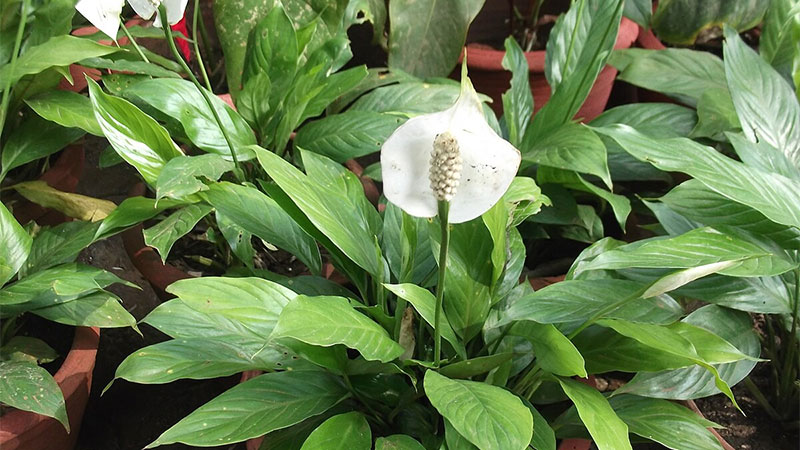
Conclusion
Choosing the best plants for bathroom without natural light can transform even the most ordinary bathroom into a serene and inviting space. These plants, with their ability to thrive in low light and humid conditions, bring a refreshing touch of greenery and vitality to your bathroom.
Whether you opt for the resilient Snake Plant with its bold, upright leaves or the graceful trailing vines of Pothos, these plants not only enhance the aesthetic appeal of your bathroom but also contribute to a healthier indoor environment by purifying the air and adding humidity.
The beauty of selecting the best plants for bathroom without natural light lies in their adaptability and low maintenance requirements, making them perfect for busy lifestyles. Each plant, from the elegant Peace Lily to the robust ZZ Plant, brings its own unique charm, creating a tranquil retreat within your home.
Embracing these hardy, shade-loving plants allows you to experience the soothing presence of nature, even in spaces devoid of natural light, ultimately turning your bathroom into a lush, calming sanctuary that promotes well-being and relaxation.



